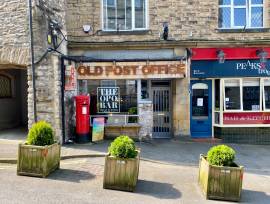All is not lost - yet
Only 134 of London's 5,700 pubs have an interior of special historic interest and now is the time to act to preserve what little is left, warns a new CAMRA guide. By Michelle Perrett.
If you are looking for a traditional historical boozer in London you will be hard pressed to find one, according to the Campaign for Real Ale (CAMRA). The consumer group says the reason is that for decades pub companies have been converting sites to trendy cafes, gastropubs and modern themed outlets. The huge majority of pubs have undergone alterations which have destroyed their traditional interiors.
CAMRA has made these claims in its newly launched guide called Regional Inventory for London: Pub Interiors of Special Historic Interest. The group explains that it is aware pubs operate in a competitive environment, but since the brewery mergers of the 1960s there has been a move towards the homogenisation of pub interiors.
The result is that despite pub signs like "Ye Olde...", or "the oldest pub in…" few pubs in the capital have interiors with much heritage value. In fact, according to CAMRA, only 134 of London's 5,700 pubs have interiors of special historic interest.
According to the guide: "If its insides have been ripped out to create a trendy-looking bar looking like and serving just the same drinks as hundreds of others, its historic value is, to say the least, damaged".
It accuses pub owners and operators of "ignorance and philistinism" and also lays the blame at local planning and licensing systems that have been "indifferent" to the value of pub interiors.
The consumer group is demanding that local planning authorities exercise their powers over listed buildings and is also asking that they set up their own local protected property lists. CAMRA believes that these moves can influence local planning policies and raise awareness about historic pub buildings.
It is calling on pub owners, brewers, planning authorities as well as tenants and managers to recognise the importance of keeping the historical interest of the sites and wants operators to capitalise on this.
Geoff Brandwood, an architectural historian and co-editor of the inventory, said: "CAMRA is calling on brewers, pub-owning companies and local planning authorities to recognise how rare authentic historic pub interiors are, and to see and use them as cultural and commercial assets. History and heritage are popular with the public and, in consequence, big business. If you have something special, why try - at great expense - to turn it into a pub looking like most of the rest?"
Robin Forshaw-Wilson, CAMRA regional director for London, added: "It's frightening how much we have lost. This new guide is a wake-up call to bring attention to the problem and help people seek out those pubs which do still have significant, genuinely old work inside."
CAMRA hopes that the London report will be the first of a series of regional studies that will eventually encompass the whole of the UK.
Pictured: Pubs which retain their historic interiors, such as the Argyll Arms in London's West End, are all too scarce in London today, according to CAMRA's report
- The Regional Inventory for London: Pub Interiors of Special Historic Interest is available online at www.camra.org.uk, from CAMRA, 230 Hatfield Road, St Albans, AL1 4LW or by calling 01727 867201. It costs £3.50 plus £1 post and packaging.
Tracing pub heritage
According to the guide:
- No public house in London has an authentic interior dating from before the middle of the 19th century
- A century ago pubs were divided into two types: beerhouses and public houses. The latter was licensed for all types of alcohol while the former could only sell beer
- The end of the 19th century and the first three or four years of the 20th were the golden age of pub building in London.
Pictured: The Tipperary, Fleet Street.
What qualifies?
- For a pub to be included in a regional inventory it should preserve a significant amount of historic interest. The emphasis is on pre-1939 interiors and those less than 30 years old are not included
- Pubs should have a reasonable level of intactness in their layouts and their fittings
- Pubs where layout has been radically altered but retain particular items of real quality may also qualify.
Pictured: The Olde Cheshire Cheese, Fleet Street













